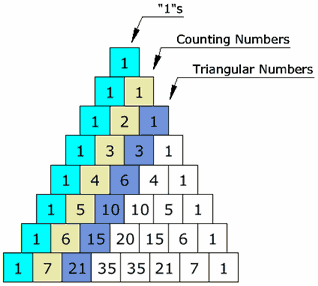 | DiagonalsThe first diagonal is, of course, just "1"s, and the next diagonal has the Counting Numbers (1,2,3, etc).The third diagonal has the triangular numbers (The fourth diagonal, not highlighted, has the tetrahedral numbers.) | |
Odds and EvensIf you color the Odd and Even numbers, you end up with a pattern the same as the Sierpinski Triangle | 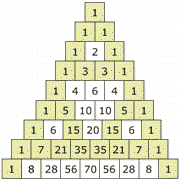 | |
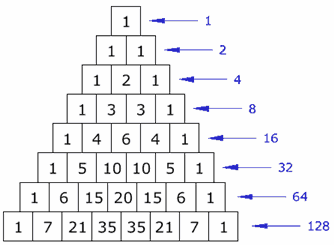 | Horizontal SumsWhat do you notice about the horizontal sums?Is there a pattern? Isn't it amazing! It doubles each time (powers of 2). | |
Exponents of 11 ⇒ Pascal's TriangleBut what happens with 115 ? Simple! The digits just overlap, like this: | 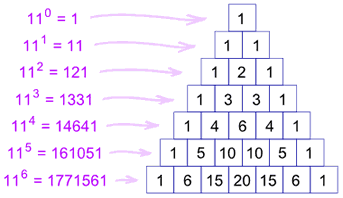 | |
Fibonacci SequenceTry this: make a pattern by going up and then along, then add up the squares (as illustrated) ... you will get the Fibonacci Sequence.(The Fibonacci Sequence starts "1, 1" and then continues by adding the two previous numbers, for example 3+5=8, then 5+8=13, etc) | 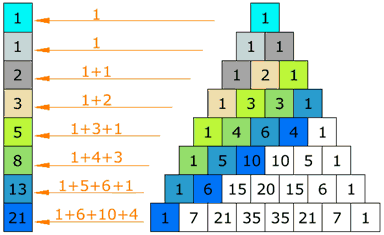 |
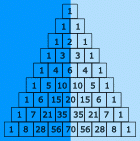 | SymmetricalAnd the triangle is also symmetrical. The numbers on the left side have identical matching numbers on the right side, like a mirror image. |
Tidak ada komentar:
Posting Komentar